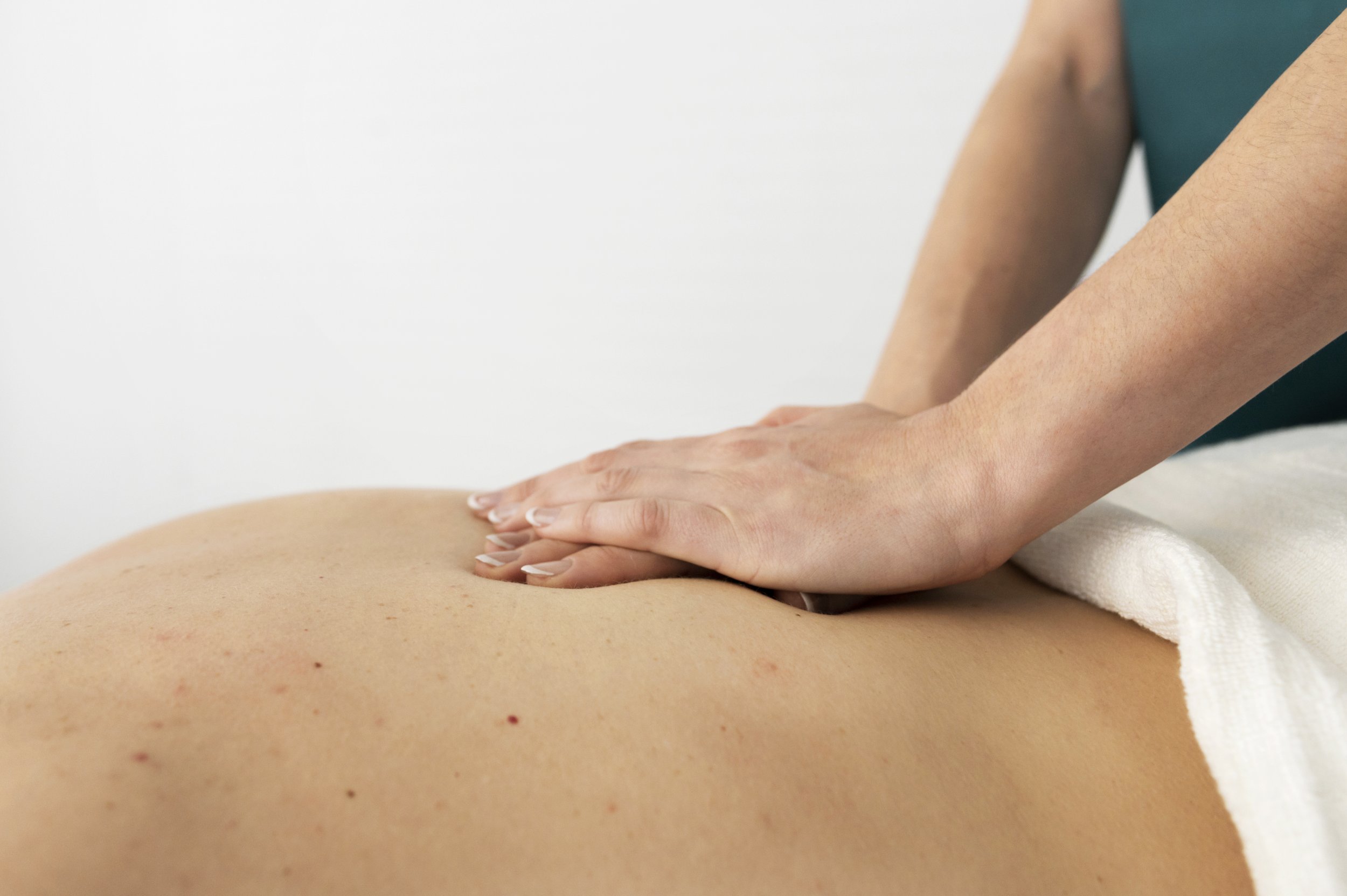
Registered
Massage Therapy
Chances are you’ve had a massage and probably felt pretty relaxed! But, did you know massage can have many health benefits beyond relaxation? A Registered Massage Therapist is a trained healthcare professional who can help with a number of conditions – from stress and muscle tension to pelvic health and nervous system regulation. Explore all that massage therapy can do for you below.
What is Registered Massage Therapy?
Massage therapy is much more than a back rub. It’s an evidence-based health practice involving the mobilization of soft tissues – muscles, connective tissue, tendons and ligaments – using mostly hands-on therapy. It can help alleviate the pain and discomfort associated with occupational stress, muscular over-use, injury, chronic pain conditions, and more (more on that below). Massage can also be beneficial for our mental health, helping to reduce stress and anxiety.
Massage therapy should only be provided by a Registered Massage Therapist (RMT). An RMT must complete a specific set of requirements – both in-depth clinical education and hands-on training hours – to be registered in Ontario. They must also continue their education to maintain their ability to practice. RMTs stand alongside a team of allied health medical professionals, such as physiotherapists and occupational therapists, whose goal is to help people live with less pain and better mobility.
There are many different types of massage, including Swedish (the most commonly used), Shiatsu and lymphatic drainage. If you’re unsure which one is right for you, ask your RMT. They can identify the best approach based on your needs.
Massage therapy and Pelvic Health
Massage therapy can be very beneficial for people suffering from pelvic health dysfunction and/or pelvic pain. Massage therapy helps release tension in the external muscles attached to the pelvis, such as the back, hip flexors, and core. By doing this, consistent massage therapy can help reduce pelvic pain.
What conditions can Registered Massage Therapy help with?
In addition to pelvic health conditions, registered massage therapy can be beneficial for:
Pre- and post-natal health issues. Read more about pre- and post-natal massage
Back and neck muscle tension
Sports injury rehabilitation
Post-surgical recovery (e.g., abdomino-pelvic surgery, endometriosis surgery , gynecologic surgery, post-prostatectomy surgery .
Read more about chest/breast massageC-section scar management
GI conditions, such as constipation, bloating and discomfort (abdominal massage)
At your first visit, you will complete a confidential health history and identify your areas of pain and/or discomfort. Your RMT will then develop a treatment plan to help address your concerns, and reach your wellness goals.
Paying for massage
Note that the services of an RMT are not covered under the Ontario Health Insurance Plan (OHIP). However, the majority of extended health benefit plans cover all or part of the cost of an RMT massage. Some insurers require a prescription from your physician. If you have any questions on cost and coverage, a member of our team can help.
Additional Resources:
Check out our YouTube videos to learn more about interstitial cystitis and Pelvic Health Physiotherapy. Here are a few we selected:
C-Section Scar Massage
Pelvic Health Physiotherapist Amy Price discusses how to safely and effectively manage a Caesarean section scar.
Pelvic and Abdominal Sensations
RMT Anna Skura discusses pelvic and abdominal anatomy and takes you through a hands-on approach to developing “pelvic listening” and doing a pelvic scan.
A Registered Massage Therapist's Perspective on Breast/Chest Massage
RMT Stephanie Maxwell talks about how massage therapy can assist with breast/chest issues, especially those that arise after surgery or during pregnancy and post-partum.
Did you know?
1 in 3 women
experience urinary incontinence
Over 30% of females
perform kegal (pelvic floor) exercises incorrectly
30-50% of females
have minor pelvic organ prolapse after a vaginal delivery
All women in France are given access to pelvic floor physiotherapy after having a baby.






